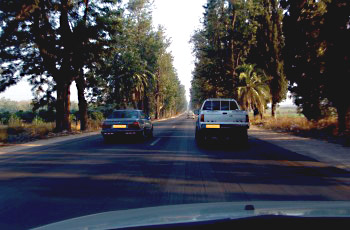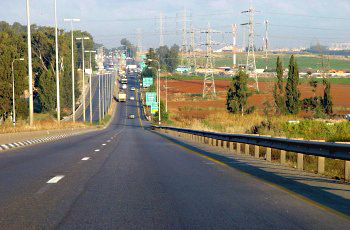Question:1
Continuous braking on a winding descent can cause:
Category : Safety
Question:2
What is the advantage of driving at a low speed during dangerous situations?
Category : Safety
Question:3
How is a driver required to conduct himself when intending to overtake a school transport bus that stopped to pick-up and let down children?

Category : Safety
Question:4
How can we overcome the problem of tiredness whilst driving?
Category : Safety
Question:5
What limitations does a driver experience while driving in reverse?
Category : Safety
Question:6
According to the following picture you are obliged to:

Category : Safety
Question:7
Which action should be taken after the tool is harnessed to the hydraulic lift arms?
Category : Safety
Question:8
When is it permitted to pass more than one vehicle during one overtaking maneuver?
Category : Safety
Question:9
What would happen if the weight exerted on the tractor’s rear hydraulic arms is too high or far away from the tractor?
Category : Safety
Question:10
What are we required to ensure before starting to drive?
Category : Safety
Question:11
Choose the only correct sentence:
Category : Safety
Question:12
While turning, what natural force pushes the vehicle against the direction of the turn?
Category : Safety
Question:13
How will a dirty front lamp influence night driving?
Category : Safety
Question:14
How can we avoid danger when we start driving and when we merge with traffic?
Category : Safety
Question:15
How would you release the hydraulic oil pressure before disconnecting the supply piping from the tractor’s attachment or additional equipment?
Category : Safety
Question:16
What should you do when you are about to start driving after stopping or parking at the side of the roadway?

Category : Safety
Question:17
A driver approaches a pedestrian crossing marked on the road.Although ther are no pedestrians on the crossing. The driver should,
Category : Safety
Question:18
When is it obligatory to install a spark protector on a tractor?
Category : Safety
Question:19
What is the relation between the vehicles speed and the vehicle’s stopping distance?
Category : Safety
Question:20
What is the correct way for pulling onto a “hard shoulder” which is lower than the road?
Category : Safety
Question:21
How can a driver handle the many tasks he needs to perform when approaching an intersection?

Category : Safety
Question:22
What are the components of the stopping distance?
Category : Safety
Question:23
What is the most important principle when turning right in an intersection?
Category : Safety
Question:24
What are we required to see in the outer side mirrors of the vehicle?
Category : Safety
Question:25
When you are overtaking another vehicle on a two-lane two-way roadway:

Category : Safety
Question:26
It is prohibited to drive too close to the vehicle in front of you:
Category : Safety
Question:27
How should the driver of the silver vehicle respond, when the driver of the dark vehicle wants to park his vehicle in reverse between two vehicles next to the sidewalk?

Category : Safety
Question:28
What is the best way to reduce the dangers whilst driving in reverse?
Category : Safety
Question:29
What should you do when your driving lane is blocked by the double-parked silver vehicle (marked with a circle)?

Category : Safety
Question:30
How does a multitude of traffic signs before an intersection affect the driver’s response?

Category : Safety

